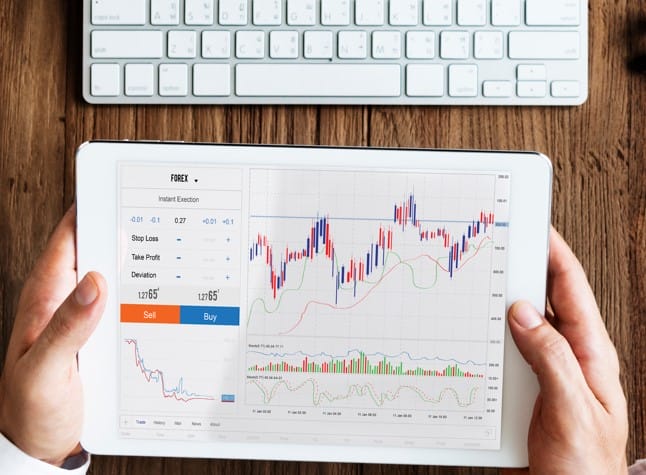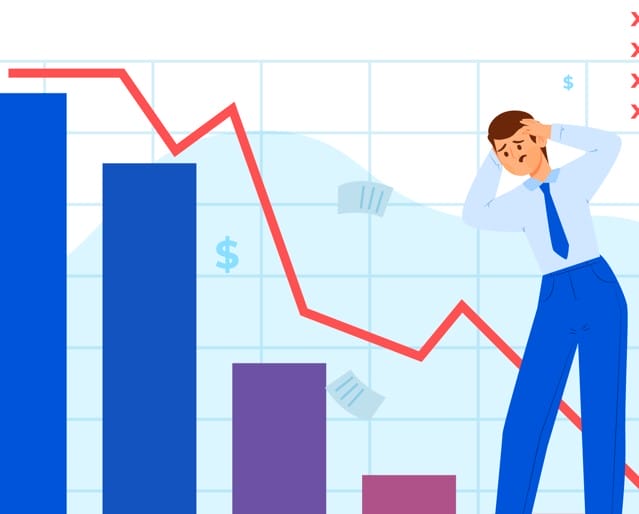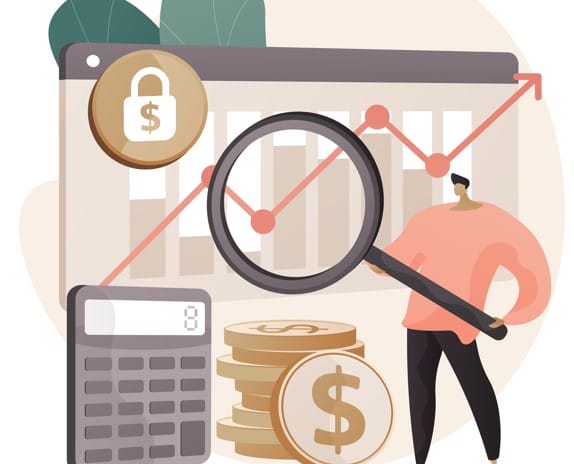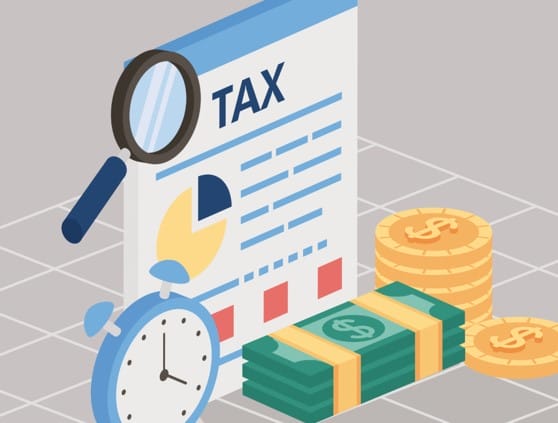Unless you’re living under a rock, you would’ve definitely heard about the crypto boom and its very soon crash. While the forex market has been operating for quite some time, the crypto market has only recently met its optimum point. But will the crypto market overtake forex ? Let’s find out through this guide on crypto vs forex

What is Forex
The foreign exchange market, sometimes known as forex, refers to the practice of trading currencies from other countries. Namely, you make an investment in the exchange rates between currencies, and you profit whether one currency appreciates in value relative to another or declines in value. Investing in foreign exchange, sometimes known as forex, involves betting on the direction of economies all around the world. You are attempting to forecast which economies will grow stronger or weaker relative to one another and how the currencies of those economies will reflect this strength. You are also attempting to forecast how changes in the levels of debt, ratios of import and export, and an infinite number of other factors would affect the demand for different currencies.

In the end, this system is predicated on the circulation of money throughout the globe, which occurs when governments, corporations, and even individual consumers make transactions across national boundaries. Because there is no central trading venue, novice investors are strongly discouraged from getting involved in one of the most intricate subfields of the financial industry. Despite the fact that investors may communicate with one another through various brokerages and banks, each currency has its own unique relationship with each other. There is not a central market or clearinghouse that regulates these deals in the same way that there is when a stock gets listed on an exchange. This is in contrast to the situation with stocks that are traded on an exchange.
What is Crypto

One type of digital asset is known as cryptocurrency. Because of this, a single unit of cryptocurrency does not have a tangible representation that can be taken out of circulation and held in the same manner that a dollar bill can be removed from circulation. Instead, the only location where a token may be found is within the digital account that verifies its ownership by you. The technology that underpins cryptocurrencies is intricate and goes beyond the scope of what can be covered in this essay. Yet, it is important to keep in mind that traditional currencies, often known as fiat currencies, are increasingly working in this manner.
For instance, when this article was being written, the United States Treasury had nearly $6.3 trillion in printed currency on hand. Around the same period, the economy of the United States had a value of approximately $23.67 trillion. The extra $17 trillion, which is the difference between the size of the economy and the quantity of dollars that have been produced, is something that only lives as account entries on computer displays. Some of them, like Bitcoin, are designed to function only as currencies. This indicates that the programming behind this product does nothing more but create tokens and control their distribution in the market.

The concept behind this is that you will use these tokens in the same manner that you would spend U.S. dollars and British pounds, for example by using them to pay for your coffee and your rent. Others, like as Ethereum, are conceptualized as purely technological endeavors. This indicates that the programming that underpins this cryptocurrency also performs some other function, and that it makes use of the tokens as a method of funding or otherwise promoting that project. They are also sometimes referred to as utility tokens due to the fact that their primary purpose is not to serve as a pure financial commodity but rather to be able to perform some kind of useful function.
The theory goes like this. In spite of the fact that cryptocurrencies have been existing for more than a decade, not a single cryptocurrency project has ever advanced past the proof-of-concept stage. Pure currencies, like as Bitcoin, are sold as novelties; nevertheless, sellers that accept payment in Bitcoin subsequently turn around and swap it for a fiat currency, with which they are able to purchase a cup of coffee. And after many years of research and development, not a single crypto-based technological initiative has ever resulted in a product that is either saleable or successful. In its current iteration, Bitcoin operates as a form of speculative asset.

Cryptocurrency is now a trade commodity rather than a functioning currency or a software utility. This is something that might change in the future, but for the time being, it remains the case. Traders purchase and sell cryptocurrency tokens in the expectation of making a profit in some kind of fiat currency. This is the vast majority of all activity in the cryptocurrency market. Bitcoins are sought for by a very small percentage of the population. They are interested in purchasing power in the form of U.S. dollars, which they may get by selling their Bitcoin tokens.
Forex Vs Crypto
Now that we’ve got a basic understanding on the forex and crypto market, let’s delve into the difference between the forex market and the crypto market:
Market Size

By a significant margin, the foreign exchange market has the highest trading volume of any market in the world. The combined market cap for cryptocurrencies had reached around $256 billion. In addition, as of April 2022, the Bank for International Settlements stated that the value of daily transactions on the foreign exchange market averaged $7.5 trillion.
Because of its enormous scale, the foreign exchange market is characterized by varying degrees of both volatility and liquidity. Before going on to more risky transactions, forex novices may get their feet wet by trading currency pairings from more stable countries, which offers more protection from suffering significant losses.
Keep in mind that although currency pairings may appear to be easy to understand when given by industry specialists, you are not familiar with them. Because the market is so large, it is possible for you to start off easily with a straightforward combination, gain an understanding of how things work, and gradually grow your portfolio without coming across anything that seems too difficult to handle.
Market Liquidity

The market for FX is far more liquid than the market for cryptocurrencies. As was mentioned up top, the definition of cryptocurrency is determined by the market for Bitcoin, and the total amount of bitcoins that are in circulation will never increase. In addition, although having a total worth of over $2 trillion, the market for cryptocurrencies is actually much less than it appears to be.
There is a limited amount of potential for investing in any token other than the high-volatility Bitcoin product due to the fact that bitcoins make up anywhere from $1 trillion to $1.4 trillion of that market. In comparison, the foreign exchange market was valued at somewhat more than $6.6 trillion at the time this article was written.
This is because it is held across a larger variety of assets than the bitcoin market and by a wider range of investors, which means that investors will have a much simpler time finding someone who can trade with them and is willing to do so.
Market Volatility

The foreign exchange market is notoriously unpredictable. Every potential investor who is interested in entering this market should keep this in mind and not understate its significance. It is exceedingly challenging to forecast the movement of a currency at any one time, and one must make a substantial investment in order to generate any sum of money that can be considered significant.
Because of this, investing in this sector of the economy is fraught with significant peril. The volatility of cryptocurrencies is always increasing. Bitcoin by itself has gone through price fluctuations that have doubled its worth before halving its market capitalization. The same may be said for a great number of the market’s less valuable items. Even though you only ever read about the investors who gained money, it is fairly typical for investors to make a fortune and lose their shirts in the same week. This is especially true in the stock market.
Anonymous Transactions

The capacity of cryptocurrencies to allow anonymous transactions was a primary factor in their first breakout success. Smaller cryptocurrencies, such as Monero, Zcash, and Verge still possess this quality, despite the fact that government interference has made it more difficult for prominent cryptocurrencies, such as Bitcoin and Ethereum, to conceal users’ identities.
On the other hand, foreign exchange transactions are overseen and controlled by the interbank market, which is comprised of a dense network of foreign exchange brokers and other financial experts. To comply with the know your customer requirement that was implemented in the interbank market in 2014, traders have been required to supply personal information in order to use an exchange since that year. For forex traders, new businesses are emerging like EagleFX that skirt around or completely disregard the Know Your Customer regulations. This trend may have been prompted by the anonymizing nature of cryptocurrencies.
Market Regulations

The foreign exchange market is one that is highly controlled. This category of assets has been there for as long as there have been markets on which to trade, and because of its precarious nature and widespread repercussions, governments have always maintained a keen interest in the activities of those who deal in currency. On the other hand, cryptocurrency is still operating in a rather frontier-like fashion. Yet at the same time directing advertising toward the benefits of investing in their cryptocurrency marketplaces, crypto markets continue to assert that they are producing technological products that are no more susceptible to SEC scrutiny than a Word document.

The actions of government authorities have slowed down as the cryptocurrency sector has become larger because they have not yet reached a conclusion about any aspect of crypto regulation. This implies that there are less regulatory barriers to overcome before investing into the cryptocurrency area, making it easier for investors to enter the market. On the other hand, this also indicates that there is a far higher degree of long-term uncertainty regarding cryptocurrencies.
The Securities and Exchange Commission (SEC), the Internal Revenue Service (IRS), the United States Treasury, and any other appropriate agencies will eventually regulate the market for cryptocurrencies just as they regulate all other markets for securities. As a consequence of this, investors should trade with the knowledge that the only question that matters is not whether new rules will be implemented but rather what form they will take.
Market Capitalization

In the same way that cryptocurrencies like bitcoin and Ethereum help feed various blockchain initiatives, foreign exchange is the gasoline that drives the economy of the globe. While Satoshi Nakamoto was inventing Bitcoin, one of the perks he provided was a transparent register of ownership for the cryptocurrency. As a direct consequence of this, it is not difficult for us to estimate the size of the cryptocurrency market. The whole value of the cryptocurrency market is close to three trillion dollars. It took a total of 12 years to create the initial combined values of one trillion dollars, and then it took an additional 11 months to add the subsequent two trillion dollars. The cumulative worth of the cryptocurrency market is swiftly and decisively climbing upward.

On the other hand, determining the value of foreign currency might be more challenging. Economists are able to provide an estimate of the overall worth of the global economy, which they determined to be $80 trillion in the year 2017. The Bank for International Settlements (BIS) compiles an estimate of the total number of foreign currency transactions worldwide once every three years. The most current report was published in September 2019 by the BIS, which stated that the daily volume of foreign exchange trading had increased to $6.6 trillion from $5.1 trillion three years earlier.
It is challenging to come at a definitive number for trade volumes in the cryptocurrency market due to the decentralized nature of cryptocurrencies. However, estimates range anywhere from $100 billion to $500 billion every day. Trading in the foreign exchange market is well-established, and the procedures and mechanisms required for doing so have been in place for some time. Although though Bitcoin has been there for the previous 13 years, it has only been in the recent past several years that it has become simple to acquire Bitcoin.
Market Participants

In the early stages of Bitcoin’s existence, there were three main types of participants: miners, retail customers, and a few small controlled exchanges. These exchanges currently provide a selection of hundreds of different cryptocurrencies for trading. In addition, during the early stages of cryptocurrency’s development, the capability to keep cryptocurrency custody on behalf of a third party was not yet fully developed. It wasn’t until MicroStrategy (MSTR) announced its first purchase of Bitcoin in August of 2020 that the door was opened for corporations that wanted to make cryptocurrencies a part of their treasury plans.
MicroStrategy’s announcement marked the beginning of a new era in corporate investment in cryptocurrencies. This opened the door for an increased number of crypto “whales” to participate in the market. Bitcoin and Ethereum are the most important cryptocurrencies on the market right now, and institutions are buying up both of them. As a result of foreign exchange trading, banks are constantly exchanging currencies and have been doing so for decades as a result of the requirement for international firms to make payroll in other nations.

Yards, which are equal to one billion units of cash, are the standard unit of exchange between banks. For the past 20 years, smaller foreign exchange dealers have found out the technology that enables them to purchase and sell currencies while simultaneously netting off the exposure to larger banks. This ability was previously only available to larger financial institutions.
As can be seen, one of the most significant distinctions between the development of cryptocurrency and that of foreign exchange trading is that the former was initially designed with the individual retail trader in mind, whilst the latter was restricted to huge financial institutions alone. Later on, larger institutions began to participate in crypto, while the little guy gained access to FX trading. Both of these developments occurred in due time.
Profitable Transactions

Within the group of people who trade forex, the fact that the vast majority of traders end up losing money is a well-known fact. The percentage of traders who conclude the quarter with at least one dollar higher in their accounts ranges from around 25 to 35 percent, but this fluctuates from quarter to quarter. This indicates that between 65 and 75 percent of traders don’t, and as a result, they lose money.

Leverage is a significant contributor to the losses that were incurred by the traders. A financial technique known as leverage has the potential to multiply both earnings and losses. Because of this, when huge levels of leverage are utilized, the market only has to move slightly against the trader’s position for a margin call to be triggered, which results in a big chunk of the trader’s trading account being wiped out. In general, a leverage of less than 10 offers traders sufficient room to breathe, giving them the ability to endure abrupt fluctuations in price.
There is the potential for arbitrage possibilities between two distinct dealers or exchanges now that high-speed computing and cryptocurrency both have a decentralized character. A trader will engage in arbitrage by first buying at one venue and then selling at another in order to profit on the price differential that exists between the two venues.
Taxation Mechanisms

The regulations governing the IRS in the United States regard profits and losses in foreign currency and crypto assets in a different manner. To begin, under the Internal Revenue Service tax code, foreign exchange is classified as a Section 1256 contract. Regardless of how long you’ve had the transaction open, this implies that 60% of the gains or losses will be recognized as long-term capital gains or losses, while the remaining 40% will be counted as short-term capital gains or losses. This applies to both long-term and short-term capital gains and losses. Spot forex traders have the option of electing to have their earnings or losses treated as regular income under Section 988 of the Internal Revenue Code.
A trader who is experiencing a profit will likely see more benefit in following the path of the Section 1256 contract, while a trader who is experiencing a loss may see more benefit in going the route of the Section 988. Forex traders are required to settle on a strategy before they begin trading, as they are unable to alter their decision once it has been made and trading has begun. On the other hand, one does not have a choice in the issue while dealing with crypto. Cryptocurrency is categorized as property for tax purposes and is taxed in a manner analogous to that of stocks.

When you sell the cryptocurrency, the tax is calculated based on how long you’ve had the position open and is determined at the time of sale. A gain or loss that was realized via a deal that was kept for less than a year is considered to be short-term. This gain or loss that occurred over a short period of time will be subject to the same tax rate as your regular income. On the other hand, if the cryptocurrency has been held for 366 days or more, then either a gain or a loss is regarded to have occurred over the long run.
Because the rates are often lower, you might expect to pay less tax on a gain that was realized over a longer period of time as opposed to a gain that was realized over a shorter period of time. When it comes to taxes, the most significant distinction between trading forex and crypto is that forex traders are required to decide in advance how they want their earnings and losses to be taxed, but crypto traders always have the same tax treatment for their transactions.
Operating Hours

The foreign exchange market is open for business around the clock, five days a week, from Monday morning in Wellington, New Zealand, all the way through Friday afternoon in New York City. Although some foreign exchange firms allow trading throughout the weekend, in most cases, you will be dealing directly against your broker in these kinds of scenarios.
On the other side, cryptocurrency is always active. Trading in cryptocurrency occurs not just around the clock but also around the clock, seven days a week. You may buy and sell cryptocurrency through your exchange at any hour of the day or night.
Final Verdict
There is no doubt that both the crypto market and the forex market have their pros and cons. However, it is impossible to tell which one will take the throne. At the moment, it seems like forex is still leading the financial markets. Only time will tell which one will end up on the top.
Don’t trade all the time, trade forex only at the confirmed trade setups.
Get more confirmed trade setups here: forexgdp.com/buy/
